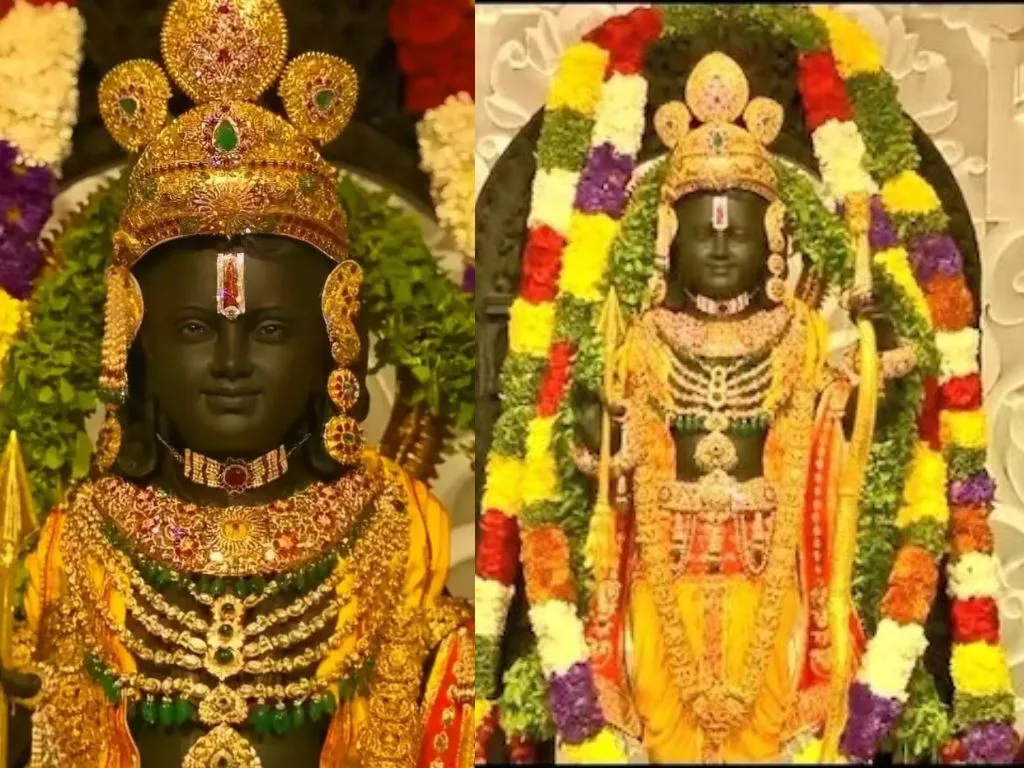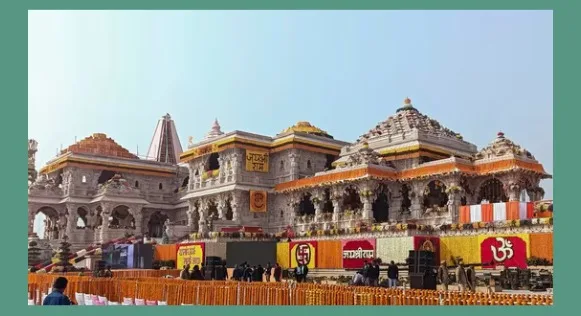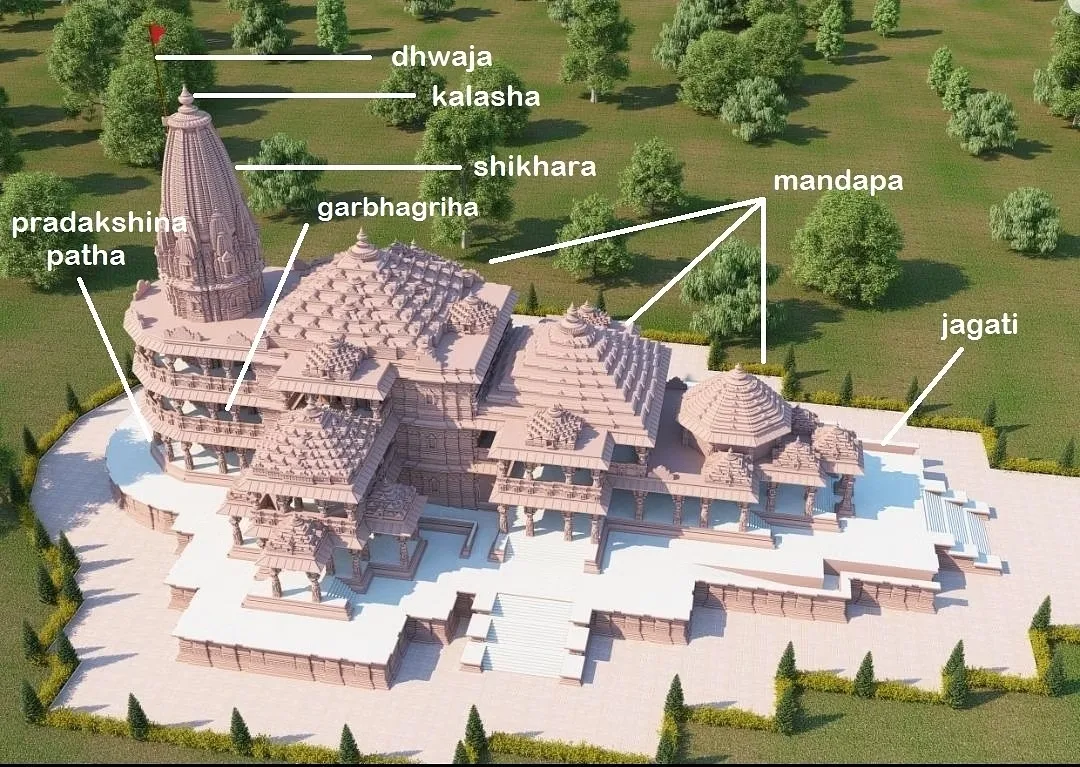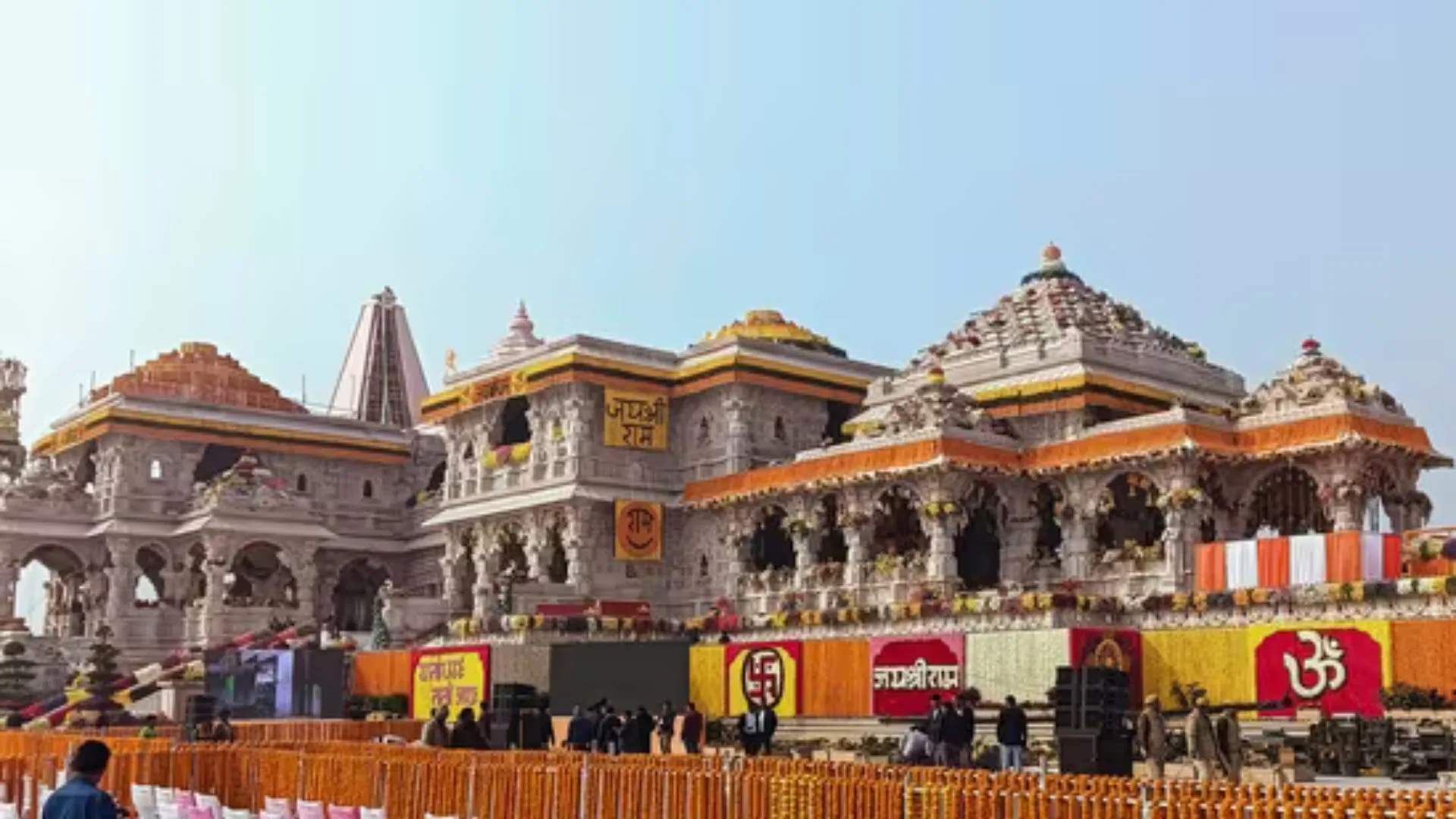Brief
The Ayodhya Ram Mandir, situated in Ayodhya, Uttar Pradesh, is a Hindu temple dedicated to Lord Shri Rama, believed to be constructed at the sacred site of Ram Janmabhoomi. This temple symbolizes the rich cultural and spiritual legacy connected to Lord Rama and carries profound cultural and religious importance for the Hindu community.

Important Facts
The construction of the Ayodhya Ram Mandir involved key contributors and features. The chief architects were Chandrakant Sompura, along with his sons Nikhil Sompura and Ashish Sompura.
Design advisors included prestigious institutions such as IIT Guwahati, IIT Chennai, IIT Bombay, NIT Surat, Central Building Research Institute Roorkee, National Geo Research Institute Hyderabad, and the National Institute of Rock Mechanics.
Larsen and Toubro (L&T) served as the construction company, while Tata Consulting Engineers Limited (TCEL) managed the project.
Sculptors like Arun Yogiraaj from Mysore, Ganesh Bhatt, and Satyanarayan Pandey contributed to the artistic elements.
The temple, set in a 70-acre area with 70% dedicated to green space, spans 2.77 acres. Its dimensions include a length of 380 feet, width of 250 feet, and height of 161 feet, following the Indian Nagar architectural style.
Notable features comprise three floors, 392 pillars, and 44 doors. The Bhoomi Pujan took place on August 5, 2020, with the inauguration held on January 22, 2024.
Materials Used
The construction of the Ram Mandir follows a commitment to traditional and sustainable practices, avoiding the use of Steel or Iron. Various materials symbolizing cultural and historical significance have been incorporated:
Bansi Paharpur Pink Sandstone from Rajasthan’s Bharatpur district forms the backbone of the main temple structure. Granite Stones have been strategically employed in the plinths, ensuring durability and stability.
The intricate inlay work showcases the use of White Makrana and Colored Marbles, adding a touch of artistry to the temple’s design. Teakwood has been chosen for the temple doors, emphasizing both strength and elegance.
Special Bricks, known as Ram Shilas, play a symbolic role by featuring the inscription “Shri Ram” and drawing parallels with the stones used in the construction of Ram Setu.
Additionally, the inclusion of Shaligram Rock, Copper Plates, Gold, and Ashtdhatu further enriches the material palette, connecting the modern construction with ancient symbolism. This meticulous selection of materials reflects a harmonious blend of craftsmanship and cultural significance in the creation of the Ram Mandir.
Key Architectural Features of Ram Mandir
The design of the Ram Mandir represents a harmonious fusion of artistic vision and traditional architectural expertise. Extensive research, encompassing the study of approximately 550 temples across India, was undertaken to identify the optimal architectural elements for the construction of the Ram Mandir.

Foundation
The foundation of the Ram Mandir is a robust structure, featuring a 14-meter thick layer of roller-compacted concrete, resembling an artificial rock. This foundation is designed to provide sturdy support to the temple’s structure.
Additionally, a protective measure against ground moisture involves the construction of a 21-foot-high plinth made of Granite. This strategic use of materials and construction techniques underscores the emphasis on durability and longevity in the temple’s design.
Also Read : Life and Legacy of Subhas Chandra Bose – Know More (kmore.info)
Main Temple
The initial design of the Ram Mandir, conceived by the Sompura family of Ahmedabad in 1988, underwent modifications in 2020 following the principles of Vastu Shastra and Shilpa Shastra. This deliberate adjustment demonstrates a conscious attempt to harmonize aesthetic elegance with ancient wisdom.
The Sompura family, celebrated for their temple craftsmanship legacy and contributions to renowned Indian temples like Somnath, imparts a sense of continuity to the Ram Mandir’s architectural design, infusing it with historical and artistic dimensions.
The three-story temple aims to immerse devotees in different stages of Lord Rama’s divine journey, with the ground floor portraying his birth and childhood, the first floor resembling Lord Rama’s Darbaar, and five Mandaps—Nritya Mandap, Rang Mandap, Sabha Mandap, Prarthna, and Kirtan Mandaps—enhancing the spiritual experience for worshippers.
The Ram Mandir has a total of 44 doors, with select ones adorned with a coating of 100 kg gold. The primary entrance, Singh Dwar, showcases statues and busts of significant Ramayana characters. Elaborate carvings and statues of deities embellish the temple’s pillars and walls, narrating India’s ancient history. The parikrama path features engravings of 100 events from Valmiki’s Ramayana, offering a visual presentation of Ram Katha Darshan.
The Temple Complex
The Ram Mandir is enclosed by a rectangular compound wall known as Parkota, measuring 732 meters in length and 14 feet in width.
The Ram Mandir complex includes additional religious structures, with temples dedicated to Surya Dev, Devi Bhagwati, Ganesh Bhagwan, and Lord Shiva at each corner.
The northern and southern arms house temples dedicated to Maa Annapurna and Lord Hanuman, respectively.
An ancient well named Sita Koop, dating back to ancient times, is situated nearby.
Proposed temples within the complex include those for Maharishi Vashishtha, Maharishi Valmiki, Maharishi Vishwamitra, Maharishi Agastya, Nishad Raj, Devi Ahilya, and Mata Shabri.
Kuber Tila, in the southwestern part, features a restored ancient Shiva temple and a bronze idol of the Ramayana character ‘Jatayu.’
Architectural Aspects
A time capsule, located about 2,000 feet beneath the Ram Mandir, holds a copper plate inscribed with key details about the temple, Lord Rama, and Ayodhya. Its purpose is to preserve the temple’s identity for future generations and prevent it from fading into obscurity. The earthquake-resistant structure is estimated to be around 2,500 years old.
The temple features idols crafted from Shaligram Rocks, dating back 60 million years, sourced from the Gandaki River in Nepal. Additionally, a bell made of Ashtadhatu (Gold, Silver, Copper, Zinc, Lead, Tin, Iron, and Mercury) weighs 2100 kg and produces audible sounds up to a distance of 15 km.
Architectural elements
The temple consists of key architectural elements:
- Sanctum Sanctorum (Grabhgriha): A small room housing the principal deity of the temple.
- Mandapa: A portico or assembly hall that leads to the Sanctum Sanctorum.
- Shikhara: A mountain-like spire with varying shapes, from pyramid to curvilinear.
- Vahana: The mount or vehicle of the main deity, placed just before the sanctum sanctorum.

Source: https://en.wikipedia.org/wiki/Ram_Mandir

How can I find out more about it?
Just Google it….or if you have any suggestions as topics, I’ll write on that next time🤗
You can breathe life into any topic! Bravo!
Thanks 😊
You’ve the most impressive websites.
thanks
Good web site! I truly love how it is easy on my eyes and the data are well written. I am wondering how I could be notified whenever a new post has been made. I’ve subscribed to your RSS which must do the trick! Have a nice day!
Thanks….keep visiting
I’d like to find out more? I’d love to find out more details.
Okkay…..I’ll add more details by the end of this week.
I’m so in love with this. You did a great job!!
May I friend you on Facebook?
https://www.facebook.com/profile.php?id=61552795031431
Akash Upadhyay
Yeah you can add me🤗